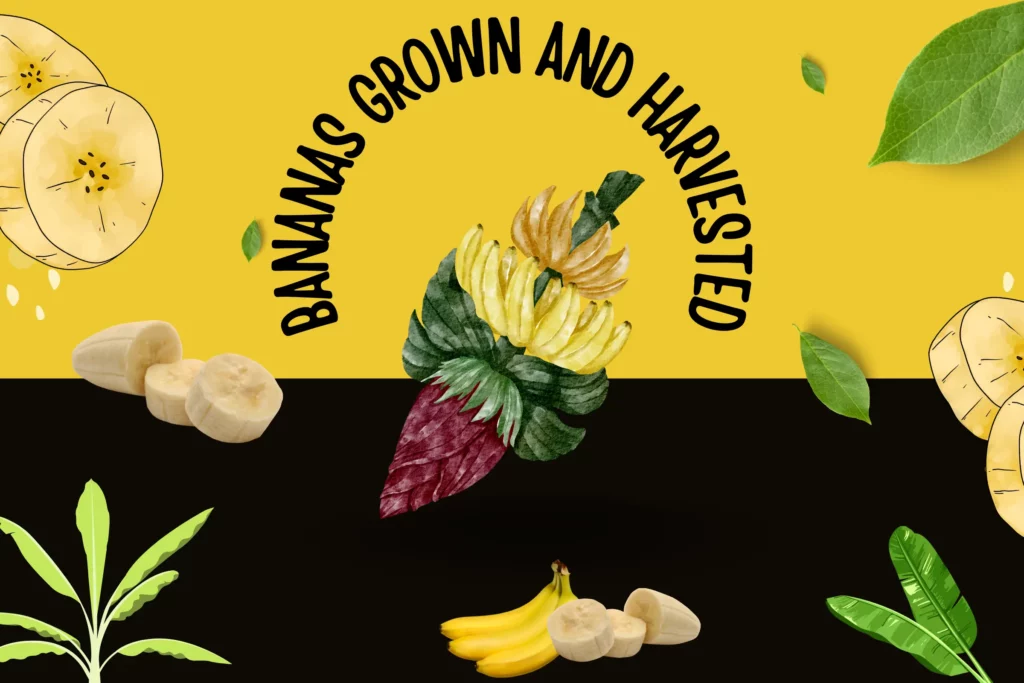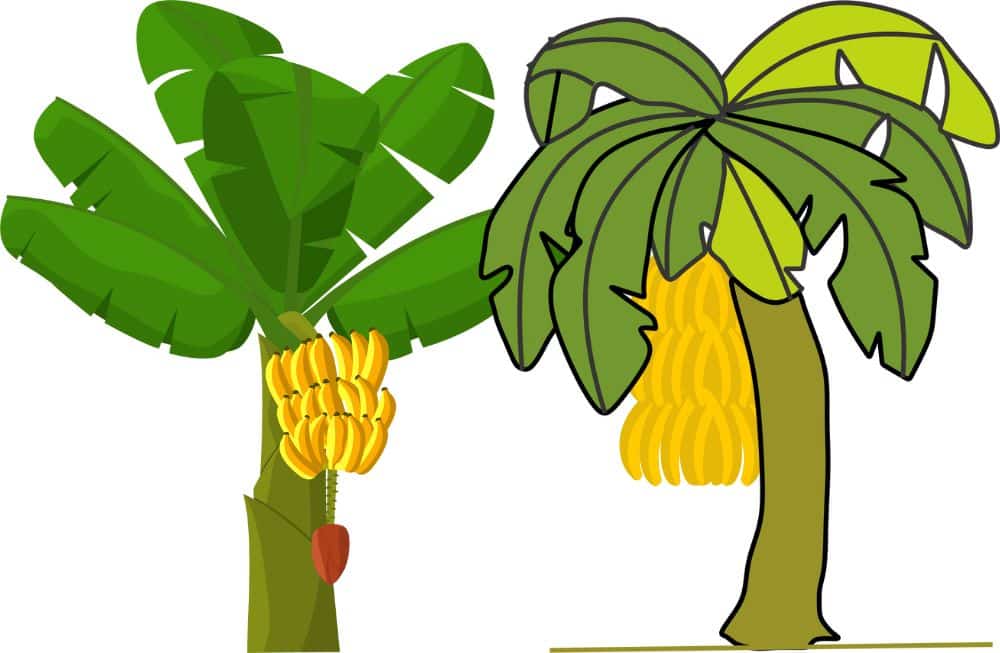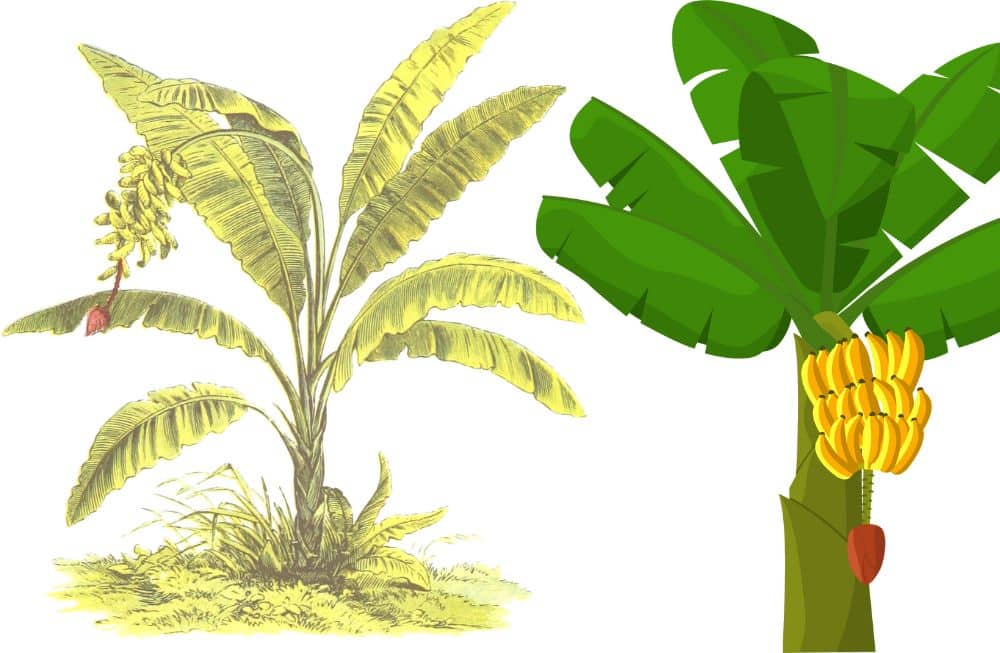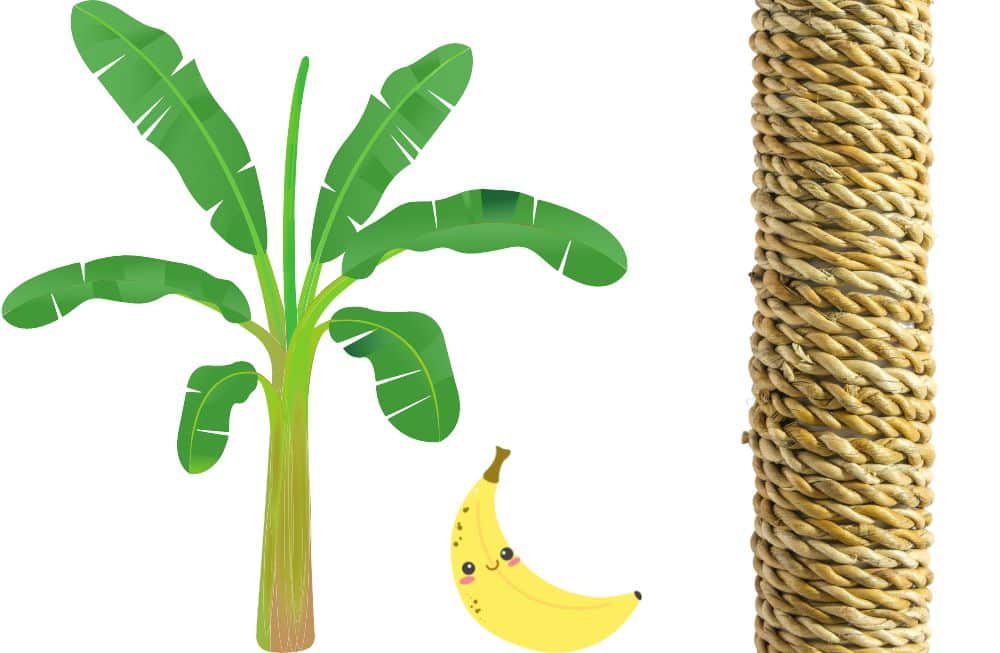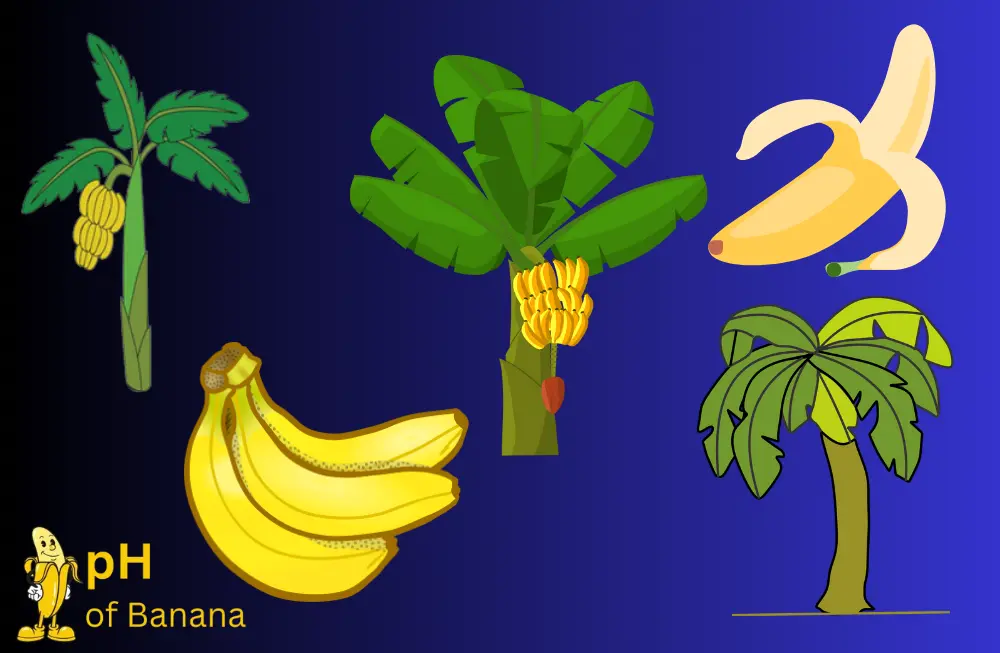Did you know that banana plants are the biggest herbs in the world? Like Orchids and Lilies, banana plants are also part of the same family. But the question arises; how are bananas grown and harvested? If you are eager to know this, take advantage of this article, as it covers everything about the growth and harvest of bananas.
Bananas are a staple food in many tropical countries and one of the world’s most popular and cheapest fruits that everyone loves to eat. It is known as the fifth most-traded fruit worldwide. We all love to use different recipes with bananas, but did we ever think about how our favorite fruit is grown and collected?
Now let us learn some exciting facts about bananas.
How Are Bananas Grown?
Like potatoes, bananas grow from underground stems called rhizomes. Though they are permanent herbs, they rise to the size of trees in one season. The stalks on a banana plant’s branch grow on top of one another and round each other to create a unit, almost a hollow tube.
Bananas are most often picked when they are still green because if you let bananas ripen on the plant, they get rotten. So, they fall from the plant when they are ripe, and you can eat them. You can eat bananas raw or cooked. You can also dry and freeze bananas!
In summer, bananas become fruit and grow to their full size in spring. When the banana is green and comes to its complete shape, it is ready to eat. You can then cut the stem and take the bananas. As time passes, bananas turn yellow from green, and as plantains ripen, they turn yellow, brown, and black.
Where Do Bananas Grow?
Bananas grow in hot and humid areas. Africa, Latin America, the Caribbean, and the Pacific are the region where people grow huge amounts of banana each year.
More than 150 countries grow bananas; yearly, they make 105 million tonnes of food. Most bananas that are developed for local use are grown in traditional, large-scale ways.
Dessert bananas, like Cavendish bananas, are essential to the economies of many countries in the Global South. They make up 43 million tonnes and are necessary to these countries’ economies; 45 million tonnes come from plantains.
Can A Banana Grow In The Indoors?
Yes, a banana can grow indoors in an enormous container, but you must ensure that your banana plant is getting enough sunlight and keep it warm during winter.
Bananas that grow in a home garden will be between 4 and 8 inches long and very sweet. The size and taste of the fruit will change, and the fruit clusters can weigh more than 100 pounds each.
But there is little chance that you will get bananas to eat from your indoor banana plant because it might take 3 to 4 years for your banana plant to give you fruits.
Furthermore, you can keep the plant to decorate your home if you don’t get any bananas!
What Are The Best Climate And Place For Bananas To Grow?
As I said earlier, bananas need a suitable climate and conditions to grow, so let us go in-depth. So, here are some facts to learn;
- Bananas grow best in hot, muggy places in tropical areas and in USDA Zones 9 through 11 in North America. The best temperature range for bananas to grow is between 78° and 86°F.
- To grow a flower stalk, a plant needs 10 to 15 months without frost. When the temperature comes down from 53° to 57°F, most bananas stop growing, but the leaves will die when it gets below freezing.
- You must also know that bananas need a lot of water when it is too hot.
- Depending on the temperature, bananas take 4 to 8 months to mature.
- Adding old chicken manure, which offers the right soil conditions and nutrients for quality growth, is one secret to good banana growth.
- Bananas grow best in the dirt, which is rich in compost, has a lot of sand, drains well, and the soil has a lot of nitrogen and potassium. The pH range for bananas is from 5.5 to 6.5.
- The banana plant must be kept from the windy area as the heavy wind can bring the bananas to the ground.
- You should leave a 5 to 6 feet gap between banana plants as the best way to grow bananas is in blocks or groups.
How Are Bananas Harvested?
Bananas are harvested after nine months of growing. However, they remain green at that time as a lot of growth to accomplish at this point remains, even if the first flowers may start to appear after six months.
Besides this, the leaves must be kept in a way that surrounds the banana, especially the ones that prevent the top of the stalk from direct sunlight and heat.
In some places where bananas are grown, a small number are taken off during the growing period to ensure they are giant when it is time to harvest.
Now, let us see step by step how bananas are harvested;
Step 1. Checkout The Terrain
When you go closer to the banana field, you must look for the bananas you want to harvest. But it can be challenging to see the bananas from inside the tree.
Step 2. Choose Your Bananas
When you go for harvesting, you have to look for stalks that are ripe or even if it is green; they will not grow anymore. If this happens, it is time for the bananas to fall from the plant as the flowers are dying.
Step 3. Get The Ground Ready
Harvesting bananas means you have to chop down the whole plant. So, after cutting down the plant, you will have to take all the bananas that have fallen on the ground.
Step 4. Get The Air Ready
Places where bananas grow, will always be full of vines, making it hard for you to get the tree down. Thus, remove any branches before you cut down your banana tree.
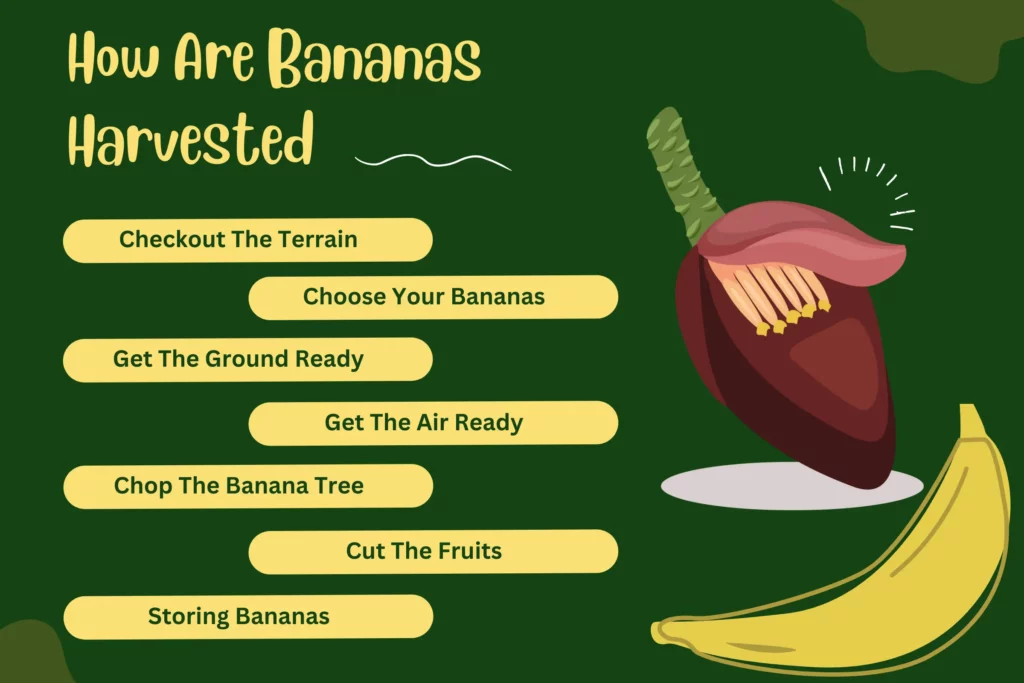
Step 5. Chop The Banana Tree
So, here you cannot do it alone! You need another person to help you when you start chopping down the tree because if the person does not hold the plant, the bananas will fall on the ground and be smashed. So, you cannot eat or use those bananas or take them away for business purposes.
Step 6. Cut The Fruits
Next, you must cut the hands with a sharp knife and leave between 6 and 9 inches of stalk at the top. Leaving a few inches of stem on the bananas will make them easy to handle. When you cut, it must be a straight line so that you do not get hurt.
Step 7. Storing Bananas
What will you do next as you have chopped down your plant and taken the bananas that complete your harvesting?
Well, you have to take the bananas and keep them in a cool place but do not wrap them in a plastic bag as plastic traps the ethylene gas and bananas will ripen faster.
How Many Times Bananas Are Harvested?
Bananas are harvested only once in a year.
When it is time to harvest, the plant’s stem, more appropriately called its “stool,” is cut. A sucker is a branch that grows from the bottom of a plant. Then the sucker helps to develop a new plant that gives many bananas within 12 to 18 months.
What Are The Methods Used To Grow Bananas?
It is not tough to grow a banana, but it is also not easy. You must follow the three steps below and practice any one of them.
Pit Method
For this way of planting, you must dig 60 x 60 x 60 cm holes. So, first, you should fill the hole with soil, sand, and Farm Yard Manure. The proportion should be 1:1:1, and plant the sucker in the middle of the hole and pack the dirt around the hole.
But this method is very time-consuming and expensive, and if you follow this method, you won’t need to dig up as we do planting at the proper depth.
Furrow Method
For this way of planting, you must prepare the field and make furrows. You can do this by hand or use a ridge to help you.
Firstly, plant the suckers at the proper distance from each other and put Farm Yard Manure and dirt around the suckers; you can pack them down.
You can use the furrow method in a yearly planting system, but you must do it often to get good at it, which will help cover the showing rhizomes.
Trench Planting
This method is used for wetlands. When the area is drained, you can prepare the field like corn, using plenty of water and a measuring wheel. You can press the suckers and put them right in the wet area.
After seven days, dig 15 cm deep holes in both directions and keep 4–6 plants alive in each block. However, you should dig the holes out by 20 to 25 cm monthly. You must keep doing this until the plants have one to three leaves, and keep cleaning the spots for at least another two months.
In the rainy season, you can use some of the ditches to drain the field.
How Many Bananas Grow In A Bunch?
In a bunch, 200 bananas can grow.
There can be up to 200 bananas in a bunch. It is in groups with two rows. Each group of 10 to 20 bananas is known as a “hand.” When picked, the hands are generally cut into 4 to 6 smaller hands, making them easier to pack.
How Hard Is It to Grow A Banana?
Suppose you are growing bananas for your business purposes; in that case, it will take some effort like clearing out the plants around the area and propping up the banana plants so they don’t bend, which can happen as the plant grows it gets heavier and using a lot of pesticides and bags to protect the banana plants from wind, birds, bugs, and extreme temperatures.
FAQs
What Is The Best Time For Bananas To Grow?
Bananas can be planted at any time of the year except when it is winter or rains, and the dirt stays very wet. So, you have to grow your bananas after the rainy season.
How Are Bananas Harvested?
Two people always work together to harvest bananas by hand. You need to do two things:
>Chopping the banana tree:
You can cut down the tree branches with bananas on them, making the bananas easy to cut and letting nature do its thing as the following tree grows back.
>Cutting off the fruits:
Cut off the hands with a sharp knife. You should leave between 6 and 9 inches of stalk at the top.
Conclusion
Well, as you all know how bananas are grown and harvested, this will make you stick to the land to plant banana trees more often as bananas are the fruit that is high in nutrients and has many health benefits.

